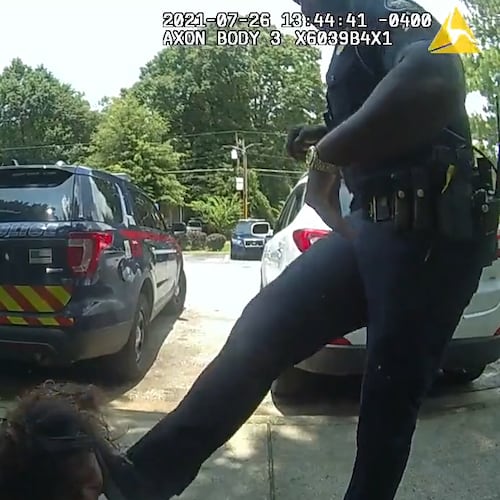The legal battle over whether counties have the right to draw their own district lines went to the Georgia Supreme Court Wednesday.
The case involves the Cobb County Commission’s decision to overrule state legislative redistricting, which would have drawn a Democratic commissioner out of her district mid-term, and claim it could draw its own district map under the Home Rule provision of the state Constitution.
The one-of-a-kind case has wide-ranging implications: It could either cement redistricting power with the state Legislature as it has been, or allow counties all over Georgia to draw their own electoral lines.
The map dispute has also impacted the coming election in Cobb.
Cobb County’s disputed map is still functionally in place and was used to qualify candidates in March for the 2024 races, despite a lower court ruling that it was unconstitutional.
County attorneys determined the map should remain in place until the appeal is ruled upon, causing confusion and frustration among candidates who would have been qualified to run for the commission District 2 if the state map had been used.
It is unlikely the court will issue a decision before the May primary election, just one month away, and it might not rule until after the general election. The deadline for a ruling is mid-November.
Justices launched into questions within minutes at the start of the hearing.
While some questions appeared to be critical of the county’s position, most centered on whether plaintiffs David and Catherine Floam, who live in the disputed area between the different maps, have the legal grounds to bring the case.
“Our precedent is really clear: (plaintiffs) have to show there is future action they’re seeking to take about which there is genuine uncertainty, and so what I’m looking for is, what is that?” asked Presiding Justice Nels Peterson.
Credit: Natrice Miller/AJC
Credit: Natrice Miller/AJC
Ray Smith, the plaintiff’s attorney, argued the Floams have a right to bring the case because they don’t know whether the map is constitutional, and it changed their district. But the justices pointed out that districts change all the time, and that does not necessarily mean those within the district have been legally harmed.
“They still get to vote. If they still get to participate in the process, how are they harmed?” asked Justice Verda Colvin. “I know they don’t get what they want. But what’s the harm?”
Smith responded that the harm may come in future elections, but the current situation has led to “chaos.”
“You’ve already got chaos,” Smith said. “You’re going to have more chaos under these two maps. Nobody understands what’s going on.”
The justices also seemed skeptical of the county’s argument that home rule allows them to draw its own map.
While home rule gives counties the authority to override the Legislature in some cases, it also says counties cannot use home rule powers to affect “any elective county office” or “the composition, form, procedure for election.”
Cobb County Attorney Elizabeth Monyak argued a map does not affect the elected position itself.
The dictionary from the time when the law was written defines “office in terms of duties, authorities, power, and that’s what affects elective county office,” she said. “The term belongs to the office, not the office holder.”
The justices had questions about that stance.
“When you change who an office represents, why isn’t that an action affecting the office?” Peterson asked.
Justin Golart, an attorney representing the state from the Attorney General’s office said redistricting power lies with the General Assembly, and that redistricting explicitly affects the elective office.
“The fact that (the county) would say that this affects neither the office nor the procedures by which an office is elected, you would think that redistricting legislation would be anodyne and uncontroversial. It clearly is not,” he said.
“It is very important to most people, including everyone in this courtroom today, because it affects the office and because it affects the procedures by which offices are elected.”
About the Author
Keep Reading
The Latest
Featured


